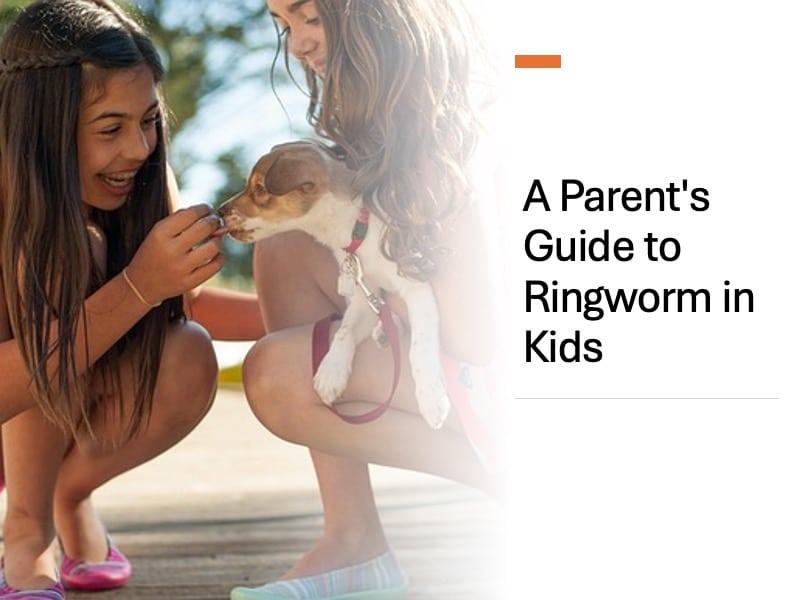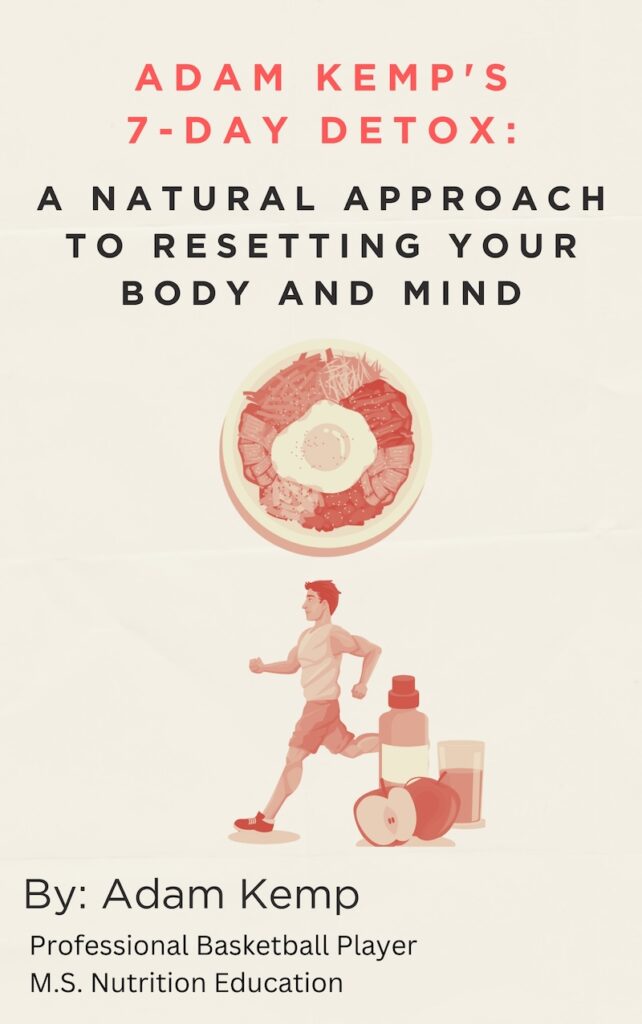A Parent’s Guide to Ringworm in Kids
Ringworm in kids is one of the most common childhood skin infections, yet its appearance can be confusing for parents who are suddenly faced with an unusual rash.
Children spend their days touching surfaces, sharing items, playing close together, and exploring different environments, which creates the perfect opportunity for fungal infections to spread.
Many families assume ringworm comes from worms because of the name, but it is actually caused by dermatophyte fungi that thrive in warm, moist environments such as playgrounds, locker rooms, homes, and sports facilities.
Parents often mistake it for eczema or dry skin at first, especially when the rash looks subtle.
Recognizing the early signs helps prevent unnecessary discomfort and stops the infection from spreading to siblings or classmates.
Understanding what ringworm looks like, how kids catch it, and how to treat it empowers parents to act quickly and protect their child’s skin health.
What Causes Ringworm in Kids?
Ringworm spreads through direct contact with the fungus or anything contaminated by it (Yee et al., 2025).
Children often catch it from touching infected skin, sharing items, or playing in environments that allow fungi to thrive.
Key Point: Parents seeking detailed, accurate, and trustworthy information about ringworm can rely on resources such as those offered by Nationwide Children’s Hospital.
Common causes include:
- Contact with an infected person.
- Sharing hats, combs, pillows, towels, or sports equipment.
- Touching contaminated mats, carpets, or playground surfaces.
- Contact with pets like cats or dogs who carry the fungus.
- Wearing sweaty clothing or sports gear for long periods.
- Moist environments that encourage fungal growth.
Because kids frequently play in close-contact settings such as schools, gyms, daycare centers, and team sports, they have a higher chance of exposure than adults.
What Does Ringworm Look Like in Kids?
Ringworm usually appears as a circular or ring-shaped patch, although the exact look depends on a child’s skin tone, sensitivity, and the location of the infection.
Many children develop a classic “ring” with a raised, scaly border and a clearer center, but others may show irregular dry patches, itchy bumps, or subtle areas of irritation that don’t resemble a perfect circle.
These rashes tend to:
- Slowly expand outward.
- Develop more irritation around the edges.
- Cause burning or itching after sweating or activity.
- Look red, pink, gray, or brown depending on skin tone.
Nationwide Children’s Hospital notes that appearances vary depending on which part of the body is affected, which explains why parents may not recognize it right away.
Examples include:
- Body: Red, ring-shaped patches that are itchy or flaky.
- Scalp: Flaky areas resembling dandruff, thinning hair, or circular bald spots.
- Feet: Peeling or cracking skin similar to athlete’s foot.
- Face: Subtle, irritated patches that may not form a full ring.
Any rash that grows, develops a defined border, or becomes more inflamed over time should be evaluated by a healthcare professional.
Key Signs and Symptoms Parents Should Watch For
Parents often discover ringworm only after a small patch of irritation begins to change in shape, size, or texture, which is why understanding the most recognizable signs makes such a difference.
Many early symptoms are subtle and can look like dry skin, bug bites, or mild eczema, yet ringworm tends to follow a predictable pattern as it develops.
Recognizing these patterns helps parents act sooner, limit the spread of the infection, and ensure their child receives appropriate care.
The Classic Ring-Shaped Rash
Parents often notice a slowly expanding ring with a scaly, bumpy border and clearer middle.
The rash may be round, oval, or uneven depending on the child’s skin tone and moisture level.
Persistent Itching or Burning
Kids often scratch the infected area more after playing, sweating, or being outdoors. The discomfort may be mild at first but becomes more noticeable as the rash grows.
Simple questions can help identify patterns:
- “Does it itch more after you run or play?”
- “Does the spot burn when you touch it?”
- “Has it gotten bigger since yesterday?”
Spreading or New Patches Forming
Ringworm can multiply if left untreated. Parents may see:
- Larger patches near the original area.
- New circular spots on arms, legs, or torso.
- Itchy areas previously unaffected.
Kids who play close-contact sports like wrestling, football, gymnastics, or martial arts have an increased risk because the fungus easily transfers on shared mats, helmets, and clothing.
Scalp Symptoms and Hair Changes
Scalp ringworm behaves differently from body ringworm. It may begin as mild flaking but progress to more concerning signs:
- Small bald patches.
- Tender or painful spots.
- Red, crusty, or scaly areas.
- A swollen, inflamed bump called a kerion.
Because scalp infections penetrate deeper into the skin, they typically require prescription treatment rather than topical creams.
How to Treat Ringworm in Kids
Treating ringworm in kids is straightforward when identified early.
Most cases respond well to consistent use of antifungal medications and good hygiene habits.
Use Topical Antifungal Creams for Mild Cases
For body ringworm, pediatricians often recommend over-the-counter antifungal creams such as:
- Clotrimazole
- Terbinafine
- Miconazole
Apply the cream once or twice daily for 2 to 4 weeks, even after the rash begins to improve.
Stopping treatment too early increases the risk of the infection returning.
Oral Medication for Scalp or Severe Infections
Scalp ringworm typically requires prescription oral antifungals such as griseofulvin or terbinafine.
Topical treatments alone often cannot reach the infected hair follicles.
Keep the Area Clean and Dry
Fungi thrive in moisture, so encourage your child to:
- Dry the skin thoroughly after bathing.
- Change sweaty clothes immediately.
- Avoid bandaging the rash unless instructed by a provider.
Prevent the Infection From Spreading
Simple steps help protect siblings and classmates:
- Avoid sharing brushes, hats, towels, or bedding.
- Wash linens in hot water weekly.
- Check pets for bald patches or irritated skin.
- Frequently clean sports gear and school items.
When to See a Doctor
Seek medical care if:
- The rash worsens after a week of treatment.
- Your child develops multiple patches.
- Symptoms appear on the scalp.
- Your child has a fever, swelling, or pus.
Early professional evaluation prevents complications and shortens recovery time.
How Parents Can Support Ringworm Healing at Home
Mild ringworm usually improves quickly with consistent care. Parents can support the healing process with a few simple habits:
- Keep fingernails short to reduce scratching damage.
- Remind your child not to touch or pick at the rash.
- Wash hands regularly to prevent spread.
- Use gentle, fragrance-free soaps to avoid irritation.
Most children recover within 2 to 4 weeks with proper treatment.
Final Thoughts: Important Information for Parents Handling Ringworm in Kids
Ringworm in kids is extremely common, highly treatable, and easier to manage when parents recognize the early signs and understand how it spreads.
Paying attention to circular rashes, persistent itching, flaking patches, or scalp changes allows families to act quickly and prevent the infection from spreading to other parts of the home.
With prompt treatment and consistent care, most children recover comfortably and avoid long-term irritation.
Simple awareness today helps protect your child’s skin health in the future.
This website does not provide medical advice. This website site does contain affiliate links, and purchases may earn a commission.
Read my Medical Disclaimer, Review Disclaimer, and Publishing Policies for more details. Use of this site indicates acceptance of these terms.



